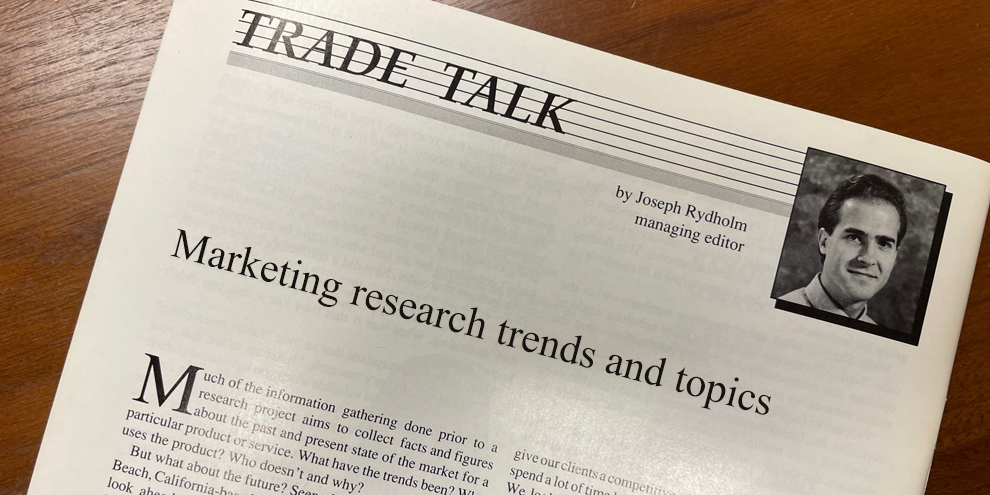A Minneapolis firm, Strategic Directions Group., has taken a different approach to researching and segmenting the U.S. Hispanic market and its opinions of advertising. Rather than focus on aspects such as country of origin or language usage, Carol Morgan, president of SDG, decided to find out if there were other factors that crossed boundaries and unified the various Hispanic segments.
“As a Hispanic myself, I was interested in finding out if attitudinal segments exist which bind together Hispanics from different countries and cultural backgrounds,” Morgan says.
“It seemed to me that there was an oversimplification of targeting Hispanics and that people were fixating on use of language, acculturation, and nationality, so part of my motivation was to see if there was a segmentation that would develop based not on the fact that people were Mexican or Puerto Rican, but if there were cross-interests that unified them.”
A mail survey in English and Spanish was sent to Hispanics representative of various nationalities across the U.S. Along with supplying demographic information, the respondents were asked to rank 24 statements on an most agree/least agree scale:
The statements dealt with reactions to a variety of topics, including reactions to how Hispanics are portrayed in advertising, how the use of Spanish effects their impression of advertising and what television networks they watched/preferred.
Some examples:
• “I can identify with the Hispanics I see in advertisements on network television.”
• “It bothers me that advertisements use Spanish expressions incorrectly. “
• “Hispanics would like to share more of their culture with others in the U.S.”
Three distinct groups
Analysis of the results segmented the Hispanic population into three distinct groups: the Traditional Positives, the Media Critics, and the Betweeners.
“This study indicates that three very different mind sets exist in the U.S. Hispanic population. Each Hispanic segment needs to be communicated with using different images, motifs, and languages. We found that there is no ‘average’ Hispanic, but segments within the Hispanic market which present opportunities,” Morgan says.
The three segments look like this:
Traditional Positives. Median age is 30. Half are single. Household income is about average as defined by the 1980 U. S. Census findings. One third of this group work as professionals, managers, or in sales/marketing. Also, one third of Traditional Positives have completed college. Of the three groups, the Traditional Positives are the most fluent speakers of Spanish and watch the most television. They are also active readers of Spanish.
Betweeners. Median age is 24. Here again household income is about average. Most members of this group are clerks, service workers, or laborers. Less than 10 percent of Betweeners are college graduates. They watch more Hispanic cable each day than do those in the other segments. Of the three groups, they seem to be the most culturally proud and active. They report the highest incidence of celebrating Hispanic holidays. They are like the Traditional Positives in two areas: they listen to both English and Spanish radio stations and they say they speak Spanish “almost always” or “usually” in the home.
Media Critics. Median age is 41. Members of this group are more likely to be married than those in the other segments. Household income is almost three times that of the other two segments. Compared to the other segments, nearly twice as many Media Critics are employed in professional, managerial, or sales/marketing jobs. They are five times more likely than the Betweeners, and twice as likely as the Traditional Positives, to have a college degree. Media Critics are heavy watchers of network news shows, but of the three groups, they watch the smallest amount of television.
Based on the research, Morgan says, it’s apparent that two principal dimensions drive the success or failure of advertising to the Hispanic market. The first is whether or not a segment is favorable to current advertising toward Hispanics. The other arises from what each segment would like to see in such advertising.
“The study suggests that levels of identification as a Hispanic, measured by use of language, observance of holidays, use of media, and so forth, are far more important than country of origin in predicting how well each segment in the Hispanic market accepts advertising directed at it.”
For example, the Traditional Positives favor advertising that portrays Hispanic families. Overall, they are more interested in advertisements that show Hispanics and they would prefer to see more Hispanic customs and foods in advertisements. Of the three groups, they are the most excited by the efforts of American companies to create products geared to Hispanic tastes. But they have strong negative feelings towards learning about a product in English.
In contrast, Betweeners, who, as the name connotes, seem to be comfortable in both the Hispanic and U.S. cultures, are open to learning about products in English, especially via advertisements with Hispanic themes. Though they look more favorably on a new product when it is advertised in Spanish, the use of Spanish doesn’t make them trust products or services more than those advertised in English. They feel Hispanics are represented accurately in advertising, especially in ads they see on Hispanic cable television.
The Media Critics, however, have a very negative view of how Hispanics are portrayed in advertising. They feel that advertisements on network television, for example, aren’t accurate and they don’t show a wide understanding of Hispanic culture, nor do they succeed at showing Hispanic values. This group feels that there is no discrepancy between Hispanics shown in advertisements, even though they may be from different countries. Most Media Critics are fluent in Spanish and English, but they don’t trust a product more if it is advertised in Spanish.
